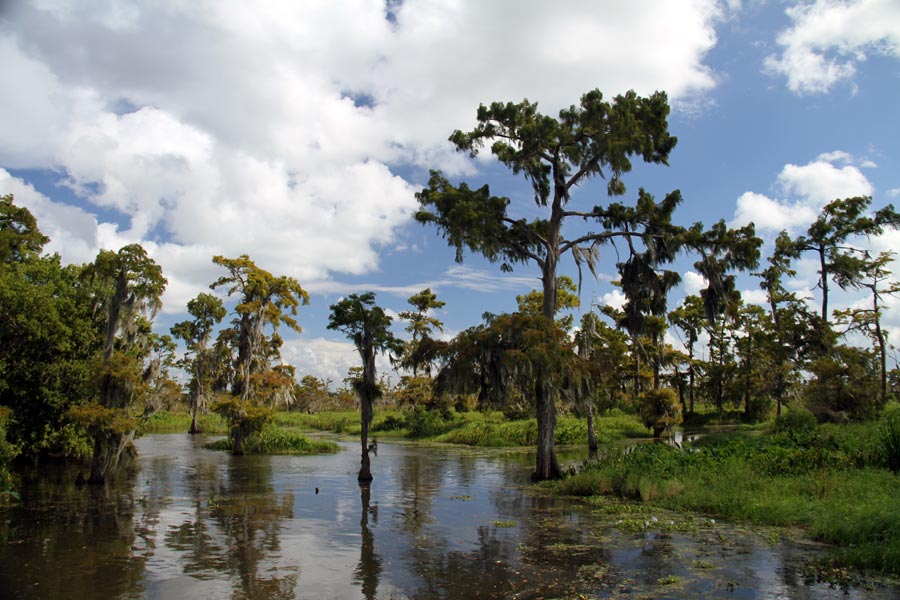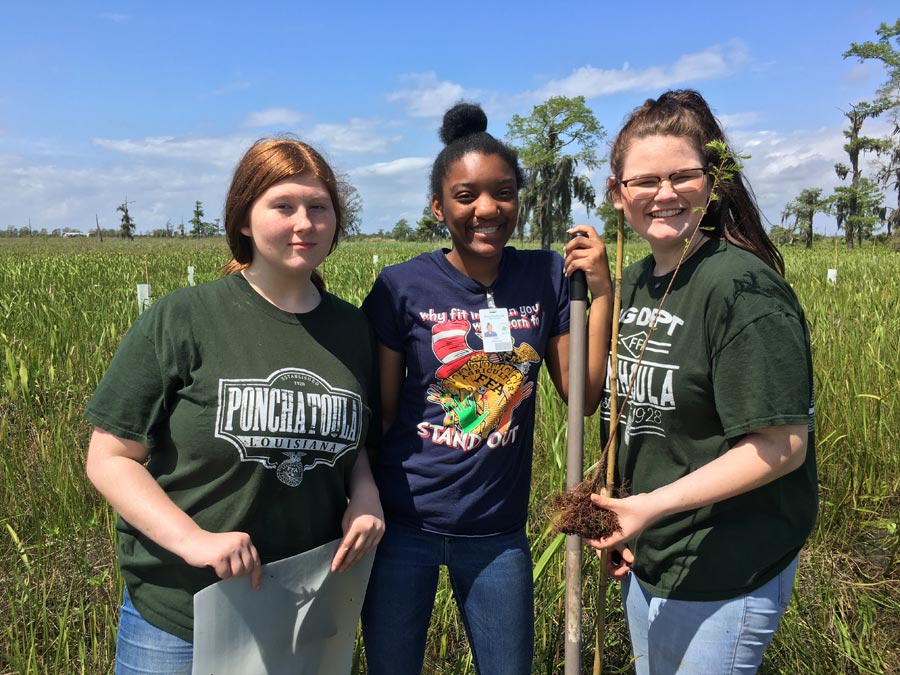Maurepas Land Bridge
The Maurepas Land Bridge is a critical line of defense in reducing risk from storm surge for communities around Lake Maurepas as well as East Baton Rouge. Historically, the land bridge was covered with swamp forest dominated by bald cypress trees. The entire land bridge was clear cut in the late 1800’s and early 1900’s when logging of cypress peaked in the region. The construction of the MRGO (Mississippi River-Gulf Outlet), which introduced higher salinity to Lakes Pontchartrain and Maurepas, also had an effect on the remaining cypress stands.
PC has begun a planting program on the Maurepas Landbridge modeled after our program at the Caernarvon Freshwater Diversion. The goal is to contribute to large-scale, long-term restoration in the Pontchartrain Basin. If successful, this swamp reforestation could restore wildlife habitat and reduce storm surge for the surrounding communities.
PC has begun a planting program on the Maurepas Landbridge modeled after our program at the Caernarvon Freshwater Diversion. The goal is to contribute to large-scale, long-term restoration in the Pontchartrain Basin. If successful, this swamp reforestation could restore wildlife habitat and reduce storm surge for the surrounding communities.

Learn More
Planned Swamp Restoration on the Maurepas Landbridge
PC has conducted various swamp tree plantings on the Maurepas Landbridge since 2013 with the help of many dedicated community volunteers. We have planted thousands of trees, most of which are surviving and already providing valuable habitat. Data gathered from monitoring these trees has provided lessons for improving the success of subsequent planting programs.

Natural Swamp Regeneration
In 2015, we noted a large swath of the land bridge where natural swamp regeneration seems to be underway. To determine if natural regeneration is occurring, PC set up a study that investigated the extent and density of natural swamp regeneration in the Maurepas land bridge.
Results
Over 600 trees comprised the sample for the regeneration study. The species composition, in general, consisted of many small individuals of red maple and green ash, medium sized individuals of black willow and black gum and larger individuals of water tupelo and bald cypress. However, bald cypress was found across a range of sizes with both small and large individuals present. In general, there was a trend of more individuals and more species found at lower soil salinity.
Although this data set is limited, it does suggest that the swamp forest on the Maurepas Land Bridge is in the beginning stages of natural regeneration. The future of natural regeneration in the region is uncertain but there are a few factors that increase the chances of success. The closure of the MRGO (Mississippi River-Gulf Outlet) has decreased both the surface and soil salinity in the region, and salinity fluctuations have decreased. Over time, the continuation of this study will reveal the dynamics of natural swamp regeneration, including shifts in species composition, mortality, and the next generation of saplings that would become the future tree canopy.
Although this data set is limited, it does suggest that the swamp forest on the Maurepas Land Bridge is in the beginning stages of natural regeneration. The future of natural regeneration in the region is uncertain but there are a few factors that increase the chances of success. The closure of the MRGO (Mississippi River-Gulf Outlet) has decreased both the surface and soil salinity in the region, and salinity fluctuations have decreased. Over time, the continuation of this study will reveal the dynamics of natural swamp regeneration, including shifts in species composition, mortality, and the next generation of saplings that would become the future tree canopy.